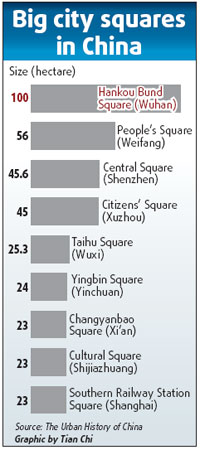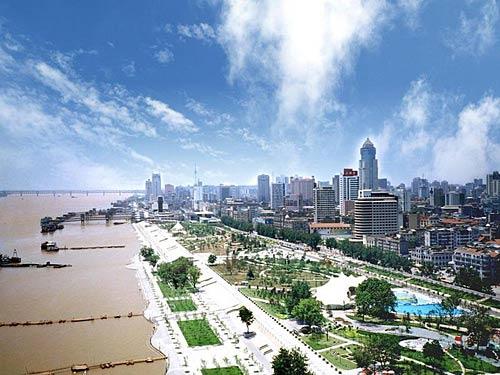While more and more Chinese cities are following Dalian's example and building large city squares, urban planning experts warned yesterday that local governments must stop simply copying the Western style and look for more practical construction and local flavor.

Dalian, the famous coastal city in Liaoning province, has earned its reputation through building dozens of large modern city squares since the late 1990s and is regarded as a model of an open and modern Chinese city.
Xinghai Square in its southern coastal area is three times bigger than Beijing's Tian'anmen Square and is the largest city square in Asia.
Inspired by Dalian, other cities have sped up city square projects to improve their images.
"The mass construction of city squares around China helps boost the local economy and enhances living conditions," said Fu Chonglan, director of the Institute of Modern Urban Rural Development Planning with Chinese Academy of Social Sciences at yesterday's launch of the book The Urban History of China.
The book reviews the history of urban development over the past 5,000 years in the fields of city development, urban living and city architecture.
"Local officials often seek the largest, not the best squares, which simply copy Western models without any creativity or consideration of local conditions," he said.
In the 1950s, due to the need of public spaces for mass gatherings, the influence of the former Soviet Union and the wish to quickly surpass developed countries, China built a large number of squares, many bigger than their counterparts in Western countries, he said.
"Then building the large squares became a competition among Chinese cities. Local officials showcased those squares to flaunt their achievements," he said.
"Fast design and construction often resulted in similar looks and poor quality."
Cao Wenming, co-author of the book, suggested that modern city square design should feature local culture and consider different local conditions, such as financial abilities.
Some underdeveloped cities like Jixi in Heilongjiang province have faced huge financial burdens by building too many squares.
Jixi invested 40 million yuan ($5.8 million) to build the largest city square in the province, although it is one of the poorest places in the region. And the square was unreasonably located a 20-minute walk from the city center, according to the book.
To collect enough money for the square, the city embezzled the road construction fund as well as reduced the wages of construction workers.
 |
|
Hankou Bund Square [File photo] |
Xiangfan, a city of less than half a million in Hubei province, has seen a dozen large city squares appear within several years, with one costing nearly 100 million yuan.
The central government in 2004 issued a series of documents to regulate city square construction.
The size of squares in small cities and towns cannot exceed 1 hectare, middle-sized cities 2 hectares, big cities 3 hectares and cities with more than 2 million people can build squares of no more than 5 hectares, according to the regulations.
(China Daily July 24, 2009)